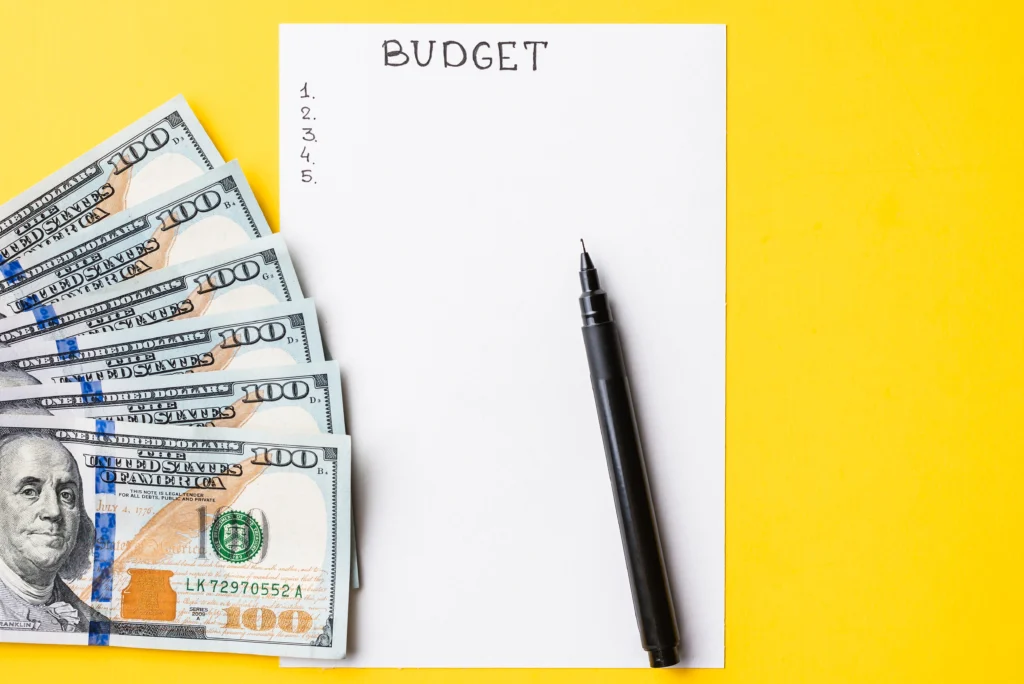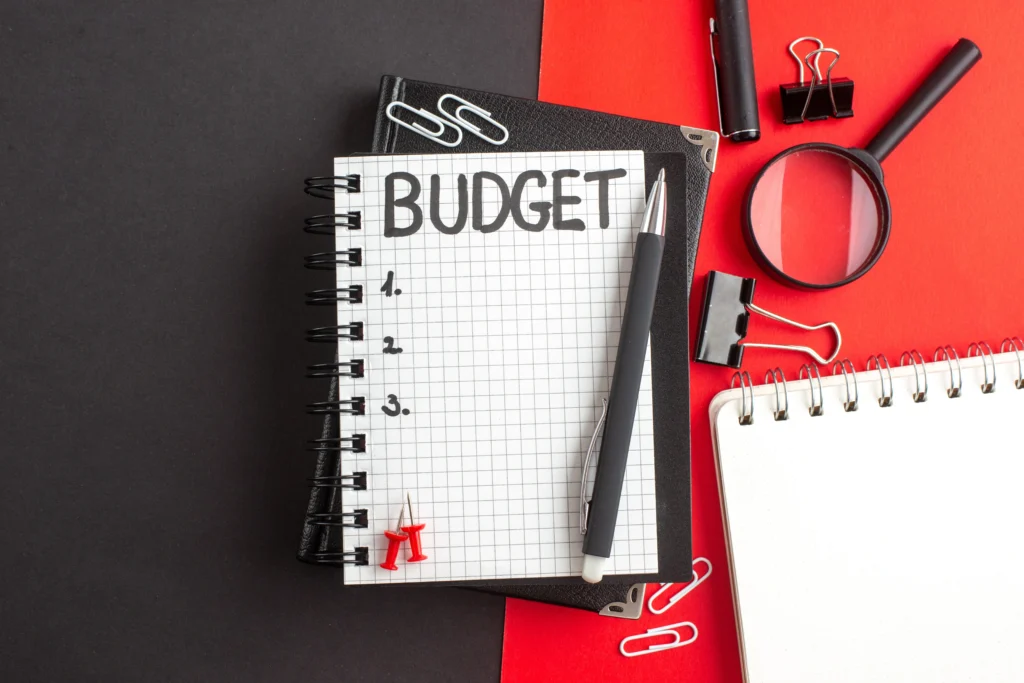Key Takeaway: Creating an effective budget isn’t about restriction—it’s about empowerment. By following these five proven steps, you’ll develop a personalized budget that naturally increases your savings while still letting you enjoy life.
Table of Contents
Let’s be honest—most budgets fail. I’ve been there, meticulously planning every dollar, only to abandon the whole thing by month two. But after years of financial coaching and learning from my own mistakes, I’ve discovered that successful budgeting isn’t about iron-clad restriction. It’s about creating a realistic plan that actually fits your life.
Think of your budget like a favorite pair of jeans—it needs to fit just right. Too tight, and you’ll be dying to take it off. Too loose, and it’s not doing its job. Today, I’m going to show you how to create that perfect fit with your money.
1. Face the Numbers: Track Your Current Spending
Remember that time you checked your account balance and thought, “Where did all my money go?” We’ve all been there. The first step to creating a budget that works is understanding where your money is actually going—not where you think it’s going.
How to Track Your Spending:
- Gather all your bank and credit card statements from the last three months
- Create categories for your expenses (housing, food, transportation, etc.)
- Record every expense in its appropriate category
- Calculate monthly averages for each category
Pro Tip: Use a free budgeting app like Mint or Personal Capital to automatically categorize your transactions. It’s like having a personal financial assistant who never sleeps!
For example, when I first tracked my spending, I discovered I was spending $200 monthly on coffee shops—money I could have been investing for my future. Small expenses really do add up!

2. Set Realistic Goals That Motivate You
The key word here is “realistic.” Setting a goal to save 90% of your income might sound ambitious, but it’s about as practical as planning to survive on air and sunshine. Instead, let’s set goals that stretch you while remaining achievable.
Types of Financial Goals to Consider:
- Short-term (3-12 months)
- Building an emergency fund
- Saving for a vacation
- Paying off a credit card
- Medium-term (1-5 years)
- Down payment for a house
- Starting a business
- Buying a car
- Long-term (5+ years)
- Retirement planning
- Children’s education
- Financial independence
According to a recent Federal Reserve study, 39% of Americans couldn’t cover a $400 emergency expense. Don’t let that be you! Start with building an emergency fund covering 3-6 months of expenses.

3. Design Your Customized Spending Plan
The 50/30/20 Framework:
Now comes the fun part—creating your spending plan. And yes, I said fun! Think of this as designing your financial future rather than restricting your present.
This popular budgeting method provides a solid starting point:
| Category | Percentage | What It Includes |
| Needs | 50% | Housing, utilities, groceries, basic transportation |
| Wants | 30% | Entertainment, dining out, hobbies, self-care |
| Savings | 20% | Emergency fund, retirement, investments |
However, don’t feel bound by these exact percentages. If you live in a high-cost area, your needs might take up 60%. The key is finding what works for your situation while still prioritizing savings.

4. Automate Your Success
Here’s where the magic happens. Automation is like having a responsible adult handling your money while your impulsive inner child takes a nap.
Steps to Automate Your Finances:
- Set up direct deposit for your paycheck
- Create automatic transfers to your savings account on payday
- Schedule automatic bill payments for fixed expenses
- Use apps to track variable expenses
Remember: what gets automated gets done. When I started automatically transferring money to my savings account on payday, my savings rate tripled without any extra effort!

5. Monitor and Adjust Regular
Your budget isn’t carved in stone—it’s more like a GPS that needs regular recalculating. Life changes, and your budget should too.
Monthly Budget Review Checklist:
- Compare actual spending to planned amounts
- Identify areas where you over or underspent
- Celebrate wins (Did you hit your savings goal? That deserves recognition!)
- Make necessary adjustments for next month
- Look for new ways to save money on essentials
Common Budget Killers to Watch For:
- Impulse purchases
- Subscription creep (those sneaky recurring charges)
- Lifestyle inflation as income increases
- Emotional spending
Consider using mindfulness techniques to combat emotional spending habits. Sometimes what we think is a money problem is actually a stress management issue.

Creating Additional Income Streams
While budgeting helps you manage existing money, creating additional income streams can supercharge your savings. Consider exploring passive income opportunities or side hustles that align with your skills and schedule.

Frequently Asked Questions
Q: How much should I save each month? A: While the general rule is 20% of your income, start with what’s realistic for you. Even saving 5% is better than saving nothing. Gradually increase your savings rate as your income grows or expenses decrease.
Q: What if I can’t stick to my budget? A: Don’t give up! Instead, analyze why you’re struggling. Often, it’s because the budget is too restrictive or doesn’t align with your actual spending patterns. Adjust accordingly and try again.
Q: Should I use cash or credit cards? A: This depends on your spending habits. Some people find cash helps them spend less, while others prefer credit cards for rewards and tracking. Choose the method that helps you stay within your budget while avoiding debt.
Q: How do I budget for irregular expenses? A: Create a separate savings account for irregular expenses (like car maintenance or holiday gifts). Divide the annual expected cost by 12 and save that amount monthly.
The Bottom Line
Creating a budget that helps you save more isn’t about deprivation—it’s about intention. By following these five steps and regularly reviewing your progress, you’ll develop a sustainable system that grows your wealth while still enjoying life’s pleasures.
Remember, the goal isn’t perfection but progress. Start where you are, use what you have, and do what you can. Your future self will thank you for every dollar saved today.
Ready to take your financial journey further? Check out our guide on common investment mistakes to avoid as you grow your savings.
What’s your biggest budgeting challenge? Share in the comments below, and let’s problem-solve together!






